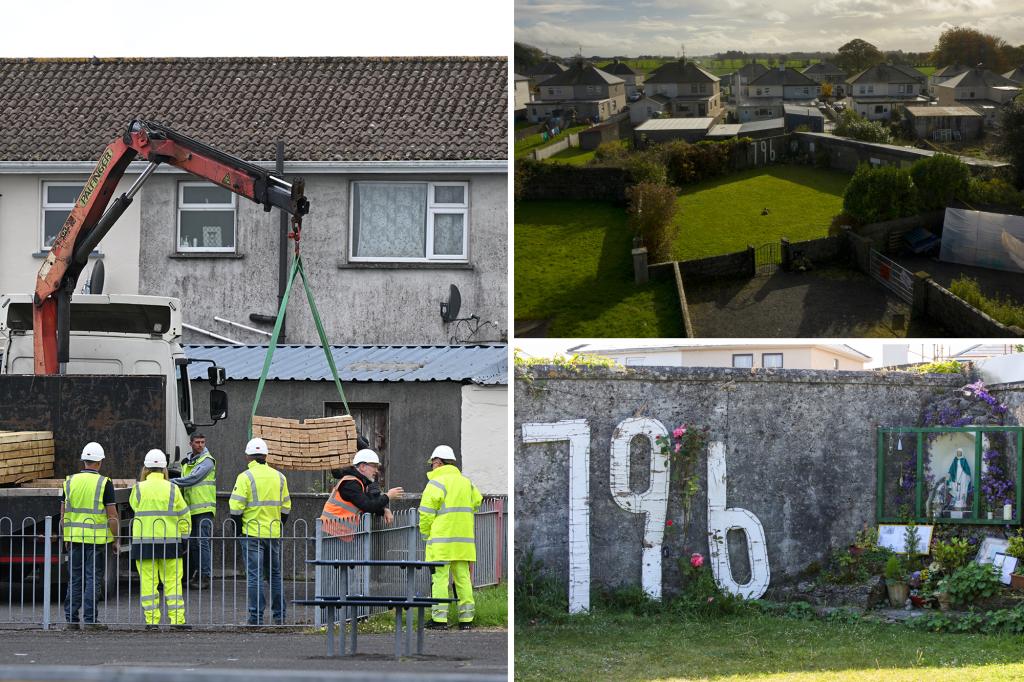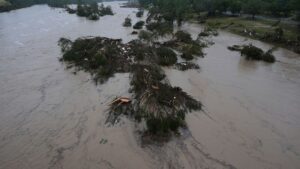
TUAM, Ireland – In a harrowing development, excavation work has commenced at a site in Tuam, County Galway, where authorities believe the remains of nearly 800 infants and children are hidden in a septic tank. These children died at a home for unwed mothers operated by Catholic nuns.
Immediate Impact
The discovery of a mass burial site at the former Bon Secours Mother and Baby Home has sent shockwaves through Ireland and beyond. Local historian Catherine Corless, whose research brought this tragedy to light, revealed to Sky News that many of the infant remains were likely discarded in what was locally known as “the pit.”
Key Details Emerge
Corless’s findings indicate that a staggering 798 children died at the home between 1925 and its closure in 1961. Shockingly, only two were buried in a nearby cemetery, while the rest are believed to be under the site of the demolished home, now surrounded by modern apartments.
“Beneath the ground at this peaceful spot in Tuam, significant quantities of human remains have been identified.” – Getty Images
The Bon Secours home, colloquially known as The Home, was a maternity facility for unmarried mothers, run by a religious order of Catholic nuns. Women were sent there to give birth and were often separated from their children, who were then raised by the nuns until adoption, frequently without the mothers’ consent.
By the Numbers
In 2014, a report concluded that 9,000 children had died in similar homes across Ireland.
As of 2022, a compensation scheme has paid out $32.7 million to 814 survivors.
What Comes Next
Excavation crews, having secured the site, are now poised to begin the painstaking search for remains, a process expected to last up to two years. The aim is to identify the infants and provide them with a dignified reburial, offering closure to survivors and families.
Annette McKay, whose sister is among the presumed victims, expressed her hope for any form of recovery: “I don’t care if it’s a thimbleful, as they tell me there wouldn’t be much remains left; at six months old, it’s mainly cartilage more than bone,” she told Sky News.
Background Context
The Bon Secours home was part of a broader network of institutions in Ireland, which included the notorious Magdalene laundries. These facilities, often run by Catholic orders, housed “fallen women” and were quietly supported by the state. The laundries remained operational until the 1990s.
In 2014, the Irish government issued a formal apology, acknowledging the systemic abuse and neglect in these institutions. The apology was followed by the establishment of a compensation scheme in 2022.
Expert Analysis
Experts believe that the excavation and subsequent findings could further illuminate the dark history of these institutions. The timing of this excavation is significant, as it follows recent legislative changes that finally enabled such efforts to commence.
Regional Implications
The uncovering of this tragedy has reignited discussions about the role of religious institutions in Ireland’s history and their relationship with the state. It also raises questions about similar sites that might exist across the country.
As the investigation continues, the world watches closely, hoping for justice and closure for the countless families affected by these historical injustices.






